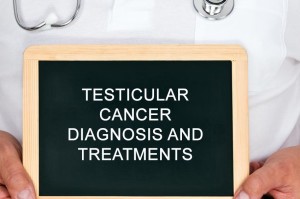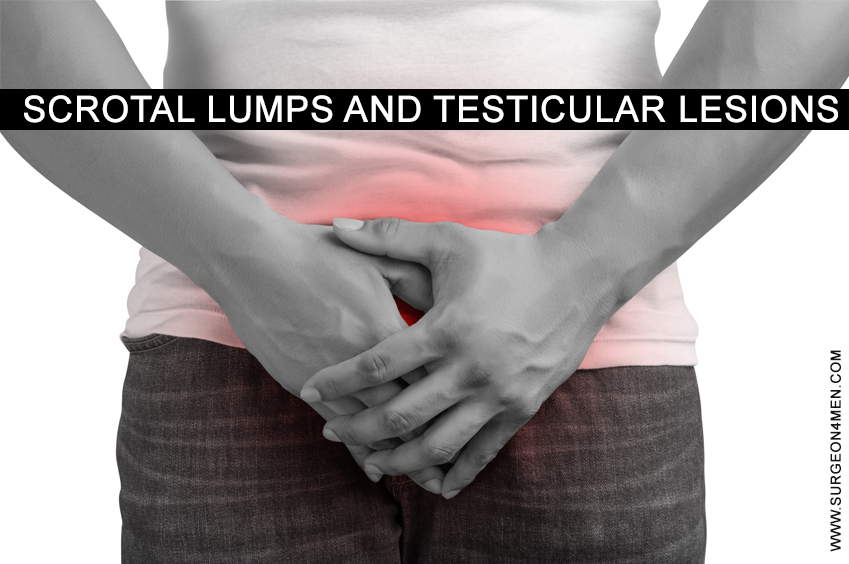Scrotal Lumps And Testicular Lesions
Having scrotal lumps does not necessarily mean that it is due to a cancer or malignant process. Sometimes, scrotal lump are due to benign lesions such as fluid filled cysts, called hydroceles or disorders of venous plexuses (also known as varicocele).The scrotal lumps are quite common in men, especially in old age. However, it is highly recommended to not overlook any type of lump formation. Experts recommends that every inguinal mass should be examined by an experienced doctor to ensure that it is not a cancer.
Common Scrotal Lumps Due To Testicular Involvement
Following is a brief description of lumps and lesions that are commonly reported in the scrotal region:
1. Hydrocele
Hydrocele refers to a benign condition in which scrotum swells up due to accumulation of fluid around the testes. Though, this type of swelling can occur at any age but it is more common in older men. Sometimes this swelling may occur due to injury or inflammation. Hydrocele slowly increases in size and can become very large with the passage of time but it is not painful in most cases.
During intrauterine development of a male fetus, the testes moves down to the scrotum from abdomen and the link between the scrotum and abdomen undergo disintegration. In some males, this connection does not disintegrate completely due to which hydrocele may form. In young males, ultrasound scan must be done because it can be a sign of underlying testes cancer. In older men, hydrocele is not life threatening but its treatment becomes necessary because the size of the swelling can be quite embarrassing, which is also often associated with an aching discomfort.
How Is It Treated?
The accumulated fluid can be drained out with a syringe but with this method hydrocele always reoccur. A minor surgery is a much better option then drainage via syringe because with surgery, there is a lesser risk of recurrence.
2. Varicocele
Varicocele is a condition in which veins above the testes undergoes swelling i.e. varicose veins. It usually happens on the left side and affects three out of twenty men. Most cases of varicocele are reported around puberty and can sometimes be fairly discomforting. Varicocele can also affect male fertility in some cases; therefore optimal management options should be sought.
How It Is Treated?
Treatment of varicocele involves a small operation in which an incision is made in the groin to tie the culprit vein. Vein can also be tied or ligated inside the abdomen via key-hole surgery.
Embolization is another option in which the culprit vein is plugged. In this procedure, the vein in groin is punctured by a small needle after which a very small tube is threaded into the source vein and then blocked with a special glue or expanding plug. This method is usually carried out by a radiologist under ultrasound guidance.
3. Orchitis
Orchitis refers to inflammation of testes. It is often reported as a complication of poorly managed mumps infection but other viruses and bacteria (rarely) can also lead to orchitis (3).
How does mumps affect the testes?
Mumps virus can harm the production of sperms especially at age of eight to nine years, as sperm producing cells begins to grow at this age. Young boys must be immunized against mumps as it may lead to permanent male infertility.
How It Is Treated?
Rest and pain killers are recommended. Antivirals have been reported to prove helpful in some cases.
4. Torsion of the testis
Twisting of testes in the scrotum is known as torsion of testes. In this condition, the testes undergoes significant swelling as a result of damage to vascular supply. People also report severe pain and spasms in the groin region. Testicular torsion is considered as a medical emergency and must be treated on emergent basis to prevent the complete death (due to ischemic injury) of testicular tissue.
What Are Some Of The Causes?
In some men testes is not securely attached to the scrotum due to which it can easily get twisted or injured with minor trauma to groin region. It is more common in younger adults and teenagers and may happen due to unsupported physical and sexual activity. It can also happen at night during sleep. If you want to save your testes, immediately rush to the nearest hospital because first few hours are crucial for the safety of testes.
Case reports published in the Journal of Evolution of Medical and Dental Sciences (4) suggested that misdiagnosis can lead to testicular necrosis and permanent infertility since symptoms may sometimes mimic torsion of spermatic cord.
How It Is Treated?
Due to unique vascular characteristics, the testicular tissue may undergo complete and irreversible injury within six to eight hours of vascular damage (or no blood supply in the region). Therefore immediate surgery must be done to untwist the testes and restore the circulation of blood.
References
1. Gupta, N., Gupta, M., & Chanchlani, R. (2015). A study to evaluate the effect of hydrocoele on testis and spermatogenesis: a cross-sectional study from Bhopal, India. International Surgery Journal, 2(4), 523-526.
2. Damsgaard, J., Joensen, U. N., Carlsen, E., Erenpreiss, J., Jensen, M. B., Matulevicius, V., … & Toppari, J. (2016). 176 Varicocele is negatively associated with semen quality and hormone levels: A study of 7067 men from six European countries. European Urology Supplements, 3(15), e176.
3. Lambert, B. (2015). The frequency of mumps and of mumps orchitis and the consequences for sexuality and fertility. Acta genetica et statistica medica, 2(Suppl 1), 1-166.
4. Chakma, N., Sarkar, P., Gupta, S., & No, H. (2013). Misdiagnosis of spermatic cord torsion resulting in testicular necrosis in preteenagers-A report of three cases and review of literature. Journal of Evolution of Medical and Dental Sciences, 2(16), 2709-2711.

